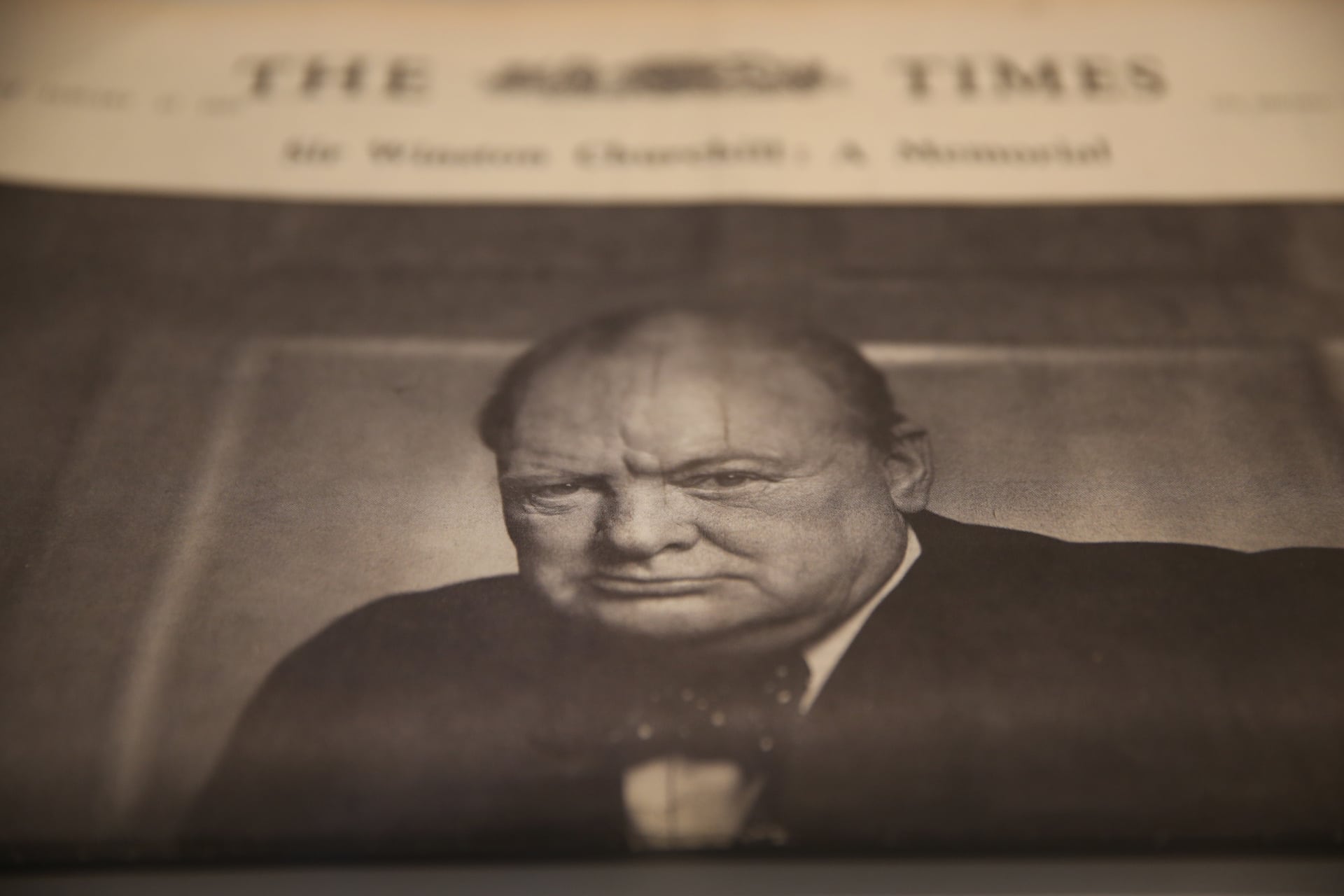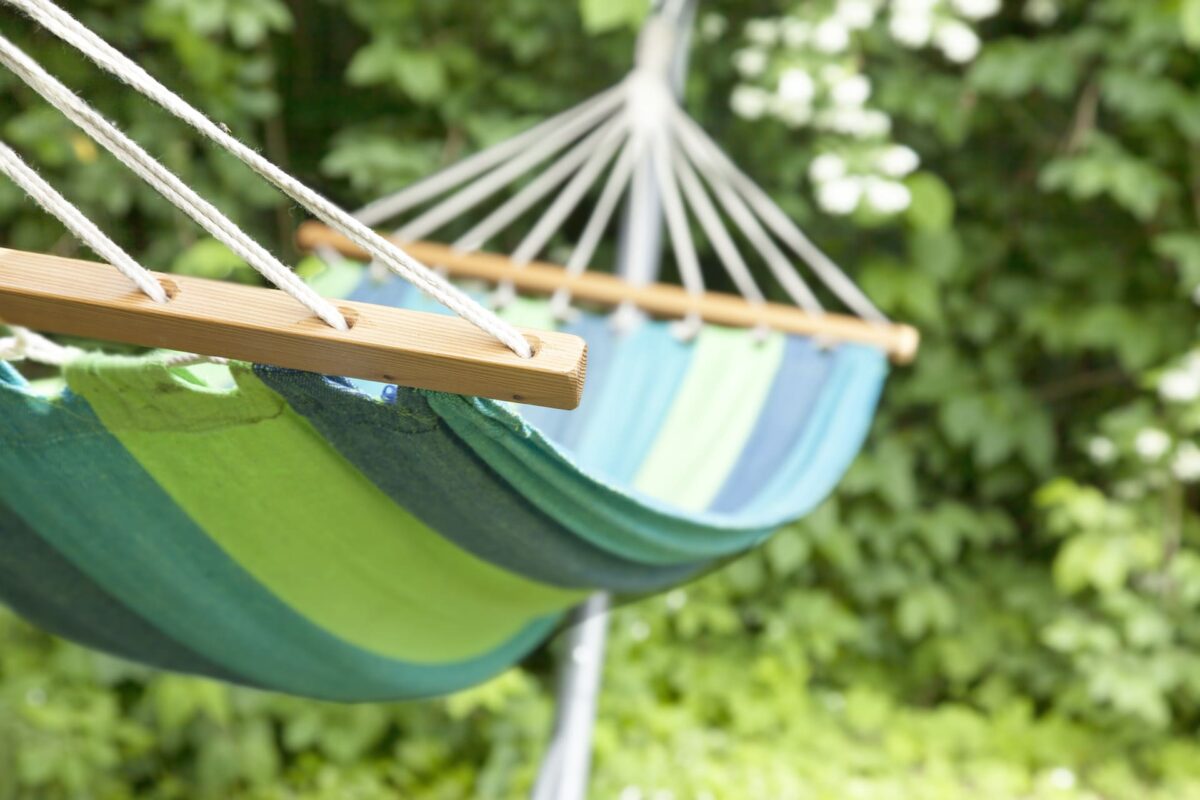How a Midday Nap Can Boost Your Performance all Day Long
One of the more unlikely museums in London is located in the basement of the Treasury, between 10 Downing Street and the Palace of Westminster: the Churchill War Rooms, the underground complex from which Prime Minister Winston Churchill and his ministers and generals fought World War II.
The War Rooms is a large warren of small offices, dormitories, and dining rooms for the prime minister and his staff, top cabinet officers, and general staff, hidden under a bomb-resistant five-foot-thick, steel-reinforced concrete ceiling. During World War II, hundreds of people worked in them, from clerks and secretaries to generals and ministers. Today, though, the space is dominated by the memory of Churchill.

The exhibits describe the ups and downs of his political career; his indefatigable energy defending Britain and the empire; his eloquence and skill as a writer; his daily life during the war; and his mix of political opportunism, realpolitik, and idealism. But one aspect of his working life gets only a brief mention, at the end of the tour: his habit of taking daily naps.
Churchill himself regarded his midday naps as essential for maintaining his mental balance, renewing his energy, and reviving his spirits. He had gotten into the habit of napping during World War I, when he was First Lord of the Admiralty, and even during the Blitz, Churchill would retire to his private room in the War Rooms after lunch, undress, and sleep for an hour or two. Unless German bombs were falling, he would then head to 10 Downing Street for a bath, change into fresh clothes, and return to work. Churchill’s valet, Frank Sawyers, later recalled, “It was one of the inflexible rules of Mr. Churchill’s daily routine that he should not miss this rest.”
Not only did a nap help Churchill keep up his energy, his sangfroid also inspired his cabinet and officers. Napping during boring parliamentary debates was one thing. Going to sleep literally while bombs were falling signaled Churchill’s confidence in his staff and his belief that the dark days would pass.
Churchill wasn’t the only Allied leader to nap regularly. George Marshall advised Dwight Eisenhower to take a daily nap; on the other side of the world, Pacific Command adjusted its schedule around Douglas MacArthur’s afternoon nap, which was part of a daily schedule that “had scarcely changed since his days as superintendent of West Point,” according to his biographer William Manchester. (Adolf Hitler, in contrast, kept more erratic hours at the best of times, and as the Allies closed in on Germany in 1944 and 1945, he tried to stay up for days at a time, powered by a mix of amphetamines, cocaine, and other drugs.)
Winston Churchill has been a model for many leaders, and at least two American presidents were inspired by his example to take up napping. John F. Kennedy was so “impressed by Churchill’s eloquence in praise of the afternoon nap,” said Arthur Schlesinger Jr., that when he entered the Senate he imitated Churchill’s practice of keeping a cot in Parliament. Later at the White House, Kennedy would normally take a 45-minute nap after lunch; like Churchill, he wouldn’t sleep in the office but would head for the residence and change into pajamas. Kennedy’s successor, Lyndon Johnson, likewise broke up his long day with a nap and shower in the afternoon.
The power of power naps
Why do naps do you good? The most obvious benefit of napping is that it increases alertness and decreases fatigue. A short nap of around twenty minutes boosts your ability to concentrate by giving your body a chance to restore depleted energy. But regular naps—the habit, not just a single nap—have other benefits.
Regular napping can improve memory. Just as the brain uses a good night’s sleep to fix memories, so too does it use naps to consolidate things you’ve just learned. Neuroscientist Sara Mednick found that napping for an hour or more during the day—a nap long enough to allow one to dream—improves performance on memory and perceptual tasks. In a study published in 2003, she had people learn a texture discrimination task in the morning. If you’ve ever been to the eye doctor, you’ve probably had a peripheral vision test: you focus your attention on a light into the center of a large screen and push a button when you see a light on the periphery. Mednick’s test was a bit similar. Subjects were shown a field of little horizontal lines with an L or T in the center. After an irregular interval, some of the lines in the lower left morphed into diagonals. Subjects had to indicate when they saw the change, whether the lines formed a horizontal or vertical row, and what the central fixation target was (partly to keep people from just focusing on the lower left-hand quadrant). It’s a simple test, but this sort of visual discrimination is the kind of thing our brains are designed for, you can quickly get pretty good at it.
After the test, subjects were divided into three groups. One group didn’t nap at all and went about their normal days. The other two took either an hour-long or ninety-minute nap in the afternoon. Everyone was then retested that evening. The subjects who didn’t have a nap did worse on the test. Among the subjects who napped, though, Mednick found that a third had essentially the same scores, while two-thirds did dramatically better in the evening.
So a nap was helping the brain fix this new pattern-recognizing skill. But what accounted for the two sets of results among the nappers? It wasn’t just the length of the nap: while the ninety-minute nappers were almost all in the high-performance group, people who slept an hour were split between both groups. Medick found the answer when she looked at EEG tracings of their sleeping brains.
When you sleep, you go through a 90-to-110-minute-long cycle that proceeds from light sleep to deep slow-wave sleep and finally to REM sleep. In REM sleep, your eyes twitch (REM stands for “rapid eye movement”), your brain waves pick up again, and you’re more likely to dream. The balance of slow-wave and REM sleep varies depending on when you fall asleep and how tired you are. Some people had fallen into slow-wave sleep during their naps, while others had both slow-wave and REM sleep. The slow-wave sleep group performed the same on the morning and evening tests. The slow-wave and REM sleep group, though, were the high performers. Finally, Mednick had the subjects take the same test again the next morning, and then two days later. Everyone’s scores went up after a night’s sleep, but the nap group’s scores rose more sharply than the non-nap group.

Other researchers have found that even a short nap can improve memory. At the University of Dusseldorf, Olaf Lahl showed two groups of students a list of thirty words for two minutes and told them to memorize as many as possible. One group was then allowed to nap for up to an hour, while the other stayed awake. When they were tested to see how many words they could recall, the students who napped did significantly better than those who didn’t. In a second experiment, one group was kept awake, a second napped as long as they wanted (about twenty-five minutes on average), and a third was woken up after five minutes. Lahl found that even a five-minute nap yielded measurable improvements in retention: not as great as a longer nap, but still statistically significant.
Naps can also help workers avoid mistakes and bad behavior. Jennifer Goldschmied, a graduate student at the University of Michigan, found that naps improve emotional regulation and self-control. She measured her subjects’ levels of tolerance for frustration by giving them paper, a pencil, and a set of diagrams. They had to copy the diagrams without lifting their pencil from the paper or tracing over a line.
What they didn’t know was that half the diagrams couldn’t be copied without violating one of those rules. The participants thought they were being tested on their visual acuity or problem-solving skills, but Goldschmied really wanted to see how much time they would spend trying to come up with a solution before they quit. She found that people who had taken a nap before trying to complete the Frustration Tolerance Task were less likely to give up than those who hadn’t napped, were less impulsive, and were better able to handle frustration.
In separate studies, Dan Ariely and Christopher Barnes found that chronic fatigue or mental exhaustion decreases a person’s self-control and decision-making ability, making them more likely to impulsively cheat than their better-rested colleagues.
How long and when?
Short twenty-minute power naps are good for boosting alertness and mental clarity. But sleep research Sara Mednick argues that by paying attention to what time of day you nap and scheduling longer naps with an eye to your sleep cycle and the highs and lows in your energy and attention levels (which follow an ultradian rhythm, rising and falling repeatedly through the day), you can tailor naps to be more physically restorative, to feed your creative activities, or to improve your memory.
Mednick did some of the first work that scientifically measured the benefits of naps. By the time she started graduate school at Harvard in the late 1990’s, sleep scientists had developed a whole toolkit to study the effects of nocturnal sleep and sleep deprivation on things like memory, alertness, and perception. Mednick applied some of those tools to study naps. Previously, researchers had mainly been interested in naps in the context of shift work and sleep deficits, no one had paid much attention to how naps could affect the cognitive performance or alertness of people with stressful or challenging lives but more regular schedules.
To her surprise, she found that a sixty- or ninety-minute nap provided the same kinds of cognitive improvements seen in people who had slept for eight hours. (That’s not to say you can trade a night’s sleep for an afternoon nap. It doesn’t work that way.) Further, she found that timing your nap can affect the balance of light sleep, REM sleep, and slow-wave sleep, and shape the kinds of benefits you get from it.

Sleep scientists have long observed that our need for sleep is governed by two things: sleep pressure and our body’s twenty-four-hour circadian rhythm. Sleep pressure is the body’s need for sleep, and, under normal circumstances, it’s what’s responsible for our feeling sleepy at night. When you wake up refreshed in the morning, your sleep pressure is at a minimum, and it builds up over the course of the day, until it reaches a peak the next night. Circadian rhythm regulates your alertness level. Under normal circumstances, you reach peak alertness around 8 a.m. and 8 p.m.; your alertness dips a little in the early afternoon, then rises through the rest of the day until late evening.
Circadian rhythm and the sleep pressure cycle operate independently of each other. Under normal circumstances the two are in sync: when we go to bed, our circadian cycle is at its lowest ebb and sleep pressure is high; when we wake up, our circadian cycle is revving up and our sleep pressure is low. But they can be thrown out of sync by jet lag, night shifts, or irregular work schedules.
The interaction of the two cycles helps determine what kind of sleep you get. When sleep pressure is high, your body demands more short-wave sleep. This is one reason why, when you go to bed at night, the first phase of your sleep tends to be dominated by deep, restorative short-wave sleep. As the night progresses, sleep pressure is eased and the need for short-wave sleep declines. In the middle of the night, your circadian cycle hits bottom and then starts to climb upward; as it does, you shift into REM sleep. By the time you wake up, your brain has been getting more active for a couple hours.
Mednick discovered that you can use knowledge of the relationship between sleep pressure, circadian rhythm, and sleep type to tailor a nap to your needs. About six hours after you wake up, your body’s circadian rhythm starts to dip and you’re likely to feel drowsy, especially if you’ve had a busy morning and lunch. A twenty-minute power nap at this point (say at 1:00 p.m.) is enough to give you a mental re-charge without leaving you groggy: if you keep it short, you’ll wake up fairly alert and can quickly get back to work. If you stretch it out to an hour, the balance between your circadian rhythm and sleep pressure will produce a nap that balances REM and short-wave sleep.
If on the other hand, you take a nap an hour earlier, five hours after waking, the balance will be different: more REM sleep, less slow-wave sleep. This kind of nap will deliver a little creative nudge: you’re likely to dream and more likely to enroll your subconscious in whatever you were recently working on. If you wait until an hour later, seven hours after waking, your body needs more rest, and an hour-long nap will be richer in slow-wave sleep and more physically restorative than creatively stimulating.

These aren’t dramatic differences: no nap will consist exclusively of one phase of sleep, and no single nap will magically turn you into Albert Einstein (who did nap regularly, it should be noted). And it’s also important to remember that there’s always a gap between laboratory studies of memory, cognition, and creativity, and real-world creativity and work. Few of us have jobs that require us only to memorize strings of numbers or remember pictures or think up unusual uses for tape. But Sara Mednick’s work on naps helps explain why, throughout history, so many dedicated, obsessed, competitive people have, in the middle of the day, stopped what they were doing and gone to sleep, and why they benefit from it.
A powerful but unused tool
In much of the world today, naps have fallen out of favor. They’re now something that young children do on kindergarten mats, not something for adults, least of all leaders and serious minds. As we move into a world and economy that seems to defy the constraints of geography and time, that operates globally and twenty-four/seven, we feel the need (or pressure) to work continuously, to ignore our body’s clocks and push on even when your bodies are pleading to rest. But this is a mistake.
Naps are powerful tools for recovering our energy and focus. We can even learn to tailor them to give us more of a creative boost, or provide more physical benefit, or explore the ideas that emerge at the boundary between consciousness and sleep. Even during his country’s most desperate hours, when he felt the fate of the nation and civilization hanging in the balance, Churchill found time for a nap. We would be wise to ask if our days and our work are really more urgent.
Adapted excerpt from Rest: Why You Get More Done When You Work Less. by Alex Soojung-Kim Pang. Copyright © 2016. Available from Basic Books, an imprint of Perseus Books, a division of PBG Publishing, LLC, a subsidiary of Hachette Book Group, Inc.
Disclosure of Material Connection: Some of the links in the post above are “affiliate links.” This means if you click on the link and purchase the item, we will receive an affiliate commission. Regardless, we only recommend products or services we use and believe will add value to our readers. We are disclosing this in accordance with the Federal Trade Commission’s 16 CFR, Part 255: “Guides Concerning the Use of Endorsements and Testimonials in Advertising.









